Last updated on April 3, 2024

Teferi's Protection | Illustrated by Chase Stone
As you’ve probably guessed by now, I’m going to be talking all about the mechanic known as “phasing” today! Phasing is a static ability that’s been around for 25(!) years but has rarely been used since its intro to the world of Magic.
We’ve seen a couple of cards picking up this peculiar keyword again recently, though, and I have to say that it excites me. Why? Because I’m a fan of old-school Magic and underdog cards. And today I’m hoping to convert you into loving for this ability, too.
Let’s get started!
All About Phasing
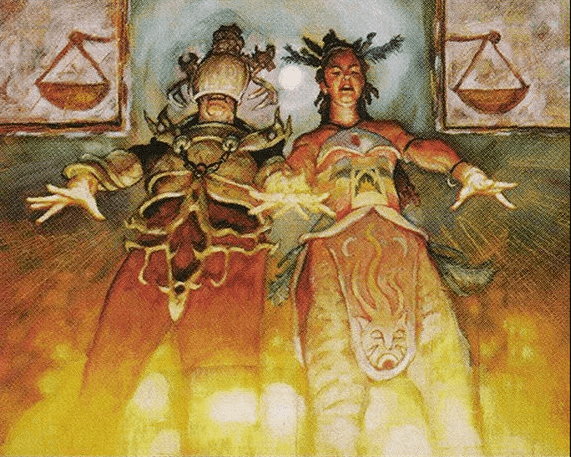
Equipoise | Illustrated by Adam Rex
So what do the official rules say about phasing?
From the glossary of the Comprehensive Rules:
Phasing
A keyword ability that causes a permanent to sometimes be treated as though it does not exist. See rule 702.25, “Phasing.”
Well, there you go! Simple, right?
Not really. The simplest way to describe it is that a permanent is basically invisible when it phases out. It’s there, but you and your opponents can’t “see” or interact with it in any way until it phases back in. Either with a card saying that it phases back in or at the beginning of your untap step.
The untap step? That’s right, along with the actual untapping, cards phasing back in is one of the only things that happens in this step. A card with phasing, like Teferi's Imp, phases in or out at the beginning of your untap step. If it’s currently phased in, it phases out. If it’s currently phased out, it phases in. And then you untap your permanents.
There are ways to give a permanent phasing. This usually happens with an effect, an ability, or an activation. The moment you or an opponent chooses to use one of those methods, your (or their) permanent phases out. This is the case with Rainbow Efreet, for example.
You may be wondering, “What can actually be affected by phasing?” The answer is: permanents. This means:
- Artifacts
- Auras
- Creatures
- Enchantments
- Equipments
- Lands
- Planeswalkers
Now that you know the basics of phasing let’s dive into it a little deeper. Let the next phase begin!
How does phasing work with auras? Does it remove enchantments? Fortifications?

Shimmering Efreet | Illustrated by Thomas Gianni
Yes, phasing works with auras, and equipment and fortifications (like Darksteel Garrison). When an enchanted permanent phases in or out, the attached auras, equipment, and fortifications move with it. This is called “indirect phasing.”
When auras, equipment, or fortifications are phased out with their permanent, they stay attached to it. The same is true when they phase back in. This means you (or your opponent) won’t lose them as a result of phasing.
“Why is that?” I hear you wondering. Because a phased-out permanent doesn’t change zones, it merely “stops existing” by becoming invisible until it’s phased back in again.
This is probably the most confusing and most amazing thing about phasing. It’s so counter-intuitive compared to the rest of Magic. Everything else always changes zones, which causes a bunch of things to happen to the card or cards affected by it. But not phasing.
Does phasing trigger ETB or LTB effects?
No, it doesn’t. For the same reason that auras and equipments don’t fall off during phasing, ETB (enter the battlefield) and LTB (leave the battlefield) triggers don’t go off. Because the permanent didn’t change zones, nothing left or entered the battlefield.
Does phasing remove counters?
No, it doesn’t. For the same reasons as listed above, any type of counters present on the permanent phasing in or out remain on it.
Can you counter the effect somehow?
Yes, and no.
When phasing is named on the card as part of its static abilities, as with Merfolk Raiders, you can’t interact with the card has phasing just by existing. There’s nothing that happened to go on the stack and be countered.
When it’s part of a spell or an activated ability, as with Sapphire Charm or Teferi, Master of Time, you can counter that spell or activated ability with a counter like Counterspell or Stifle.
How does land phasing work? Does it count as a land drop?
Lands can phase out just like any other permanent. It phases out in the state it’s in at the moment of phasing (tapped or untapped), and phases back in at the beginning of that player’s untap step.
It still doesn’t enter or leave the battlefield, though, so it doesn't count as a land drop.
Can a permanents have multiple phasing keywords put on them?
If a permanent already has phasing and gains phasing again, nothing happens. Phasing doesn’t have any other effect if you try to stack it.
What if a phased-out card loses phasing?
A phased-out card can’t lose phasing until the moment it phases back in again, with just one exception. It only affects creatures, though: Time and Tide.
Does a permanent untap when it phases back in?
No, it doesn’t. But because the effect ends at the beginning of the untap step, the permanent will untap after it's phased back in thanks to the untap step. Unless there is something explicitly preventing it from untapping, of course.
What happens if you skip your next turn and a card is phased out?
When you somehow have to skip your turn, you don’t have an untap step, and any phased-out permanents you control won’t return until the next time you have an untap step.
How are cards like Banishing Light affected by phasing?
Cards like Banishing Light that remove a card from the game underneath it keep that card under them when phased out.
What about cards that say “for as long as”?
Cards like Archangel of Tithes or Dragonlord Silumgar that make an effect happen “for as long as” they remain in a certain state stop working when they’re being phased out. This is because they can’t “see” the card or cards they’re affecting anymore. In the case of cards like Archangel of Tithes, it’s also removed from combat when it’s phased out, effectively ending its effect.
Does phasing kill tokens?
Before the release of Commander 2017 they did, but now they do not.
Because a phased-out token doesn’t change zones, it keeps existing and will phase back in no problem. This means that, when your Batterskull gets phased out, your germ will return and stay attached to Batterskull to boot.
Are phased out permanents affected by summoning sickness?
As long as they’ve experienced an upkeep before being phased out, creatures and permanents aren’t affected by summoning sickness and can use all abilities they’ve got.
The History of Phasing
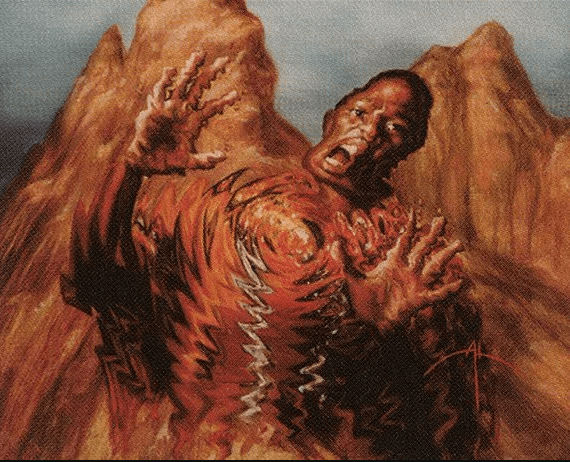
Reality Ripple | Illustrated by Alan Rabinowitz
Phasing first appeared in the Mirage block with the release of Mirage on October 8, 1996. The mechanic continued to be seen throughout Visions and Weatherlight. After that, it disappeared. WotC’s R&D department didn’t think that the players understood the ability well enough, so they nixed it.
And, in all fairness, the mechanic can be pretty confusing. But it’s still fun in a game that thrives on weird interactions and all kinds of intricate changes to rules and various states of the game through its cards. This is why everyone was so surprised that Wizards gave it a second chance on Teferi's Protection in Commander 2017.
What they effectively did was change it from a static ability to a keyword action with new reminder text. This also made the change to tokens not disappearing as a result of phasing, because it doesn’t move the affected permanents through any zones.
Phasing’s unlikely return was so surprising because of Mark Rosewater’s Stormscale. Although this is his personal stance on the likelihood of an ability making a return to MTG, it’s widely regarded as a good measure of where WotC stands on the matter. But, with phasing’s return, it moved from a 9 (I never say never, but this would require a minor miracle) to an 8 (It's unlikely to return, but possible if the stars align).
The stars must’ve aligned because three more cards have been introduced with phasing since Commander 2017. Technically, Oubliette, which was originally printed in 1993’s Arabian Nights, already existed. But its ability was changed to “phasing” in its Double Master’s reprint, retroactively making it the first card to feature phasing in MTG. Pretty interesting stuff, right?
Phasing Color Data
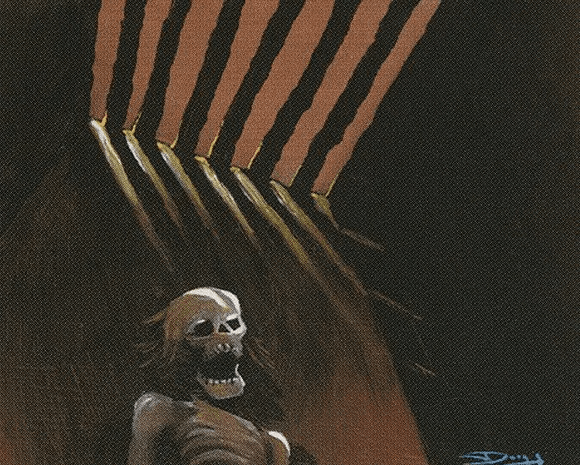
Oubliette | Illustrated by Douglas Shuler
Phasing has appeared mostly in blue, but it’s no stranger to other colors, lands, or artifacts. In total, there are 37 cards that use the phasing ability in MTG.
Here are the percentages of where phasing falls in the color pie:
- 72.2%
- 8.3%
- 5.5%
- 2.8%
- 2.8%
- 2.8%
- Artifact: 2.8%
- Land: 2.8%
The Gallery of Phasing Cards
Phasing Combos
While there aren’t many combos that involve phasing, there are a couple of interesting interactions for you to check out:
- Teferi's Protection plus Wrath of God, Armageddon, Apocalypse, Balance, or really any other card that destroys your opponent’s permanents
- Taniwha plus Impending Disaster
Phase Out

Vanishing | Illustrated by John Matson
With that, we’ve come to the end of our phasing adventures. Hopefully your appreciation for this wonderfully weird ability has increased a hundred-fold now that you’ve finished this journey with me!
I suggest taking a look at the cards to see if you can implement a couple into any of your decks. It’ll not only make your games more interesting but will also give you a chance to introduce your friends to this cool ability as well. Now you can wow them with your deep-rooted knowledge of phasing and its history. You’ll be the toast of the (digital) tabletop for sure!
As always, feel free to head on over to our blog if you want to read more awesome stuff. If you like our content and want to show your support, our Patreon is always open! We greatly appreciate your support.
That’s all for now. Stay safe, stay healthy, and I’ll see you in the next one!
Follow Draftsim for awesome articles and set updates: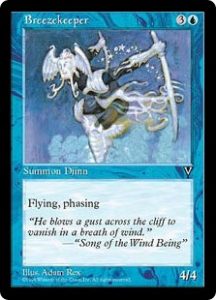
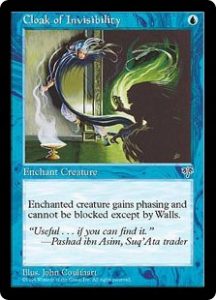
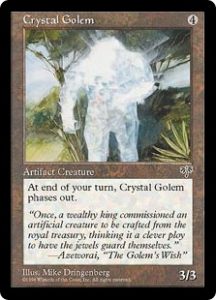
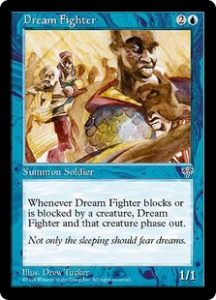
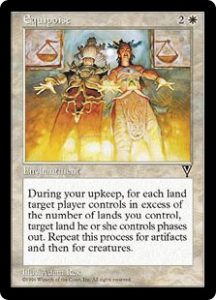
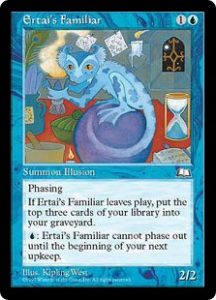

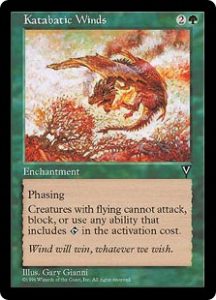


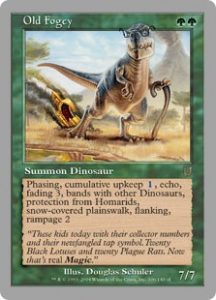

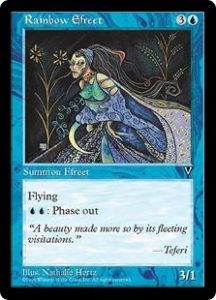

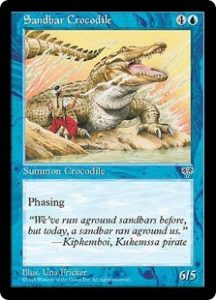
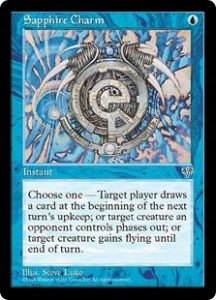
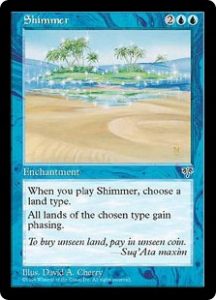

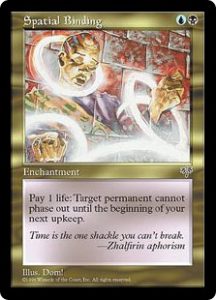
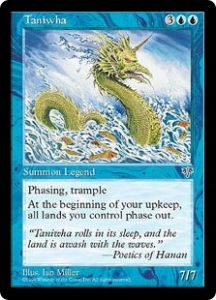


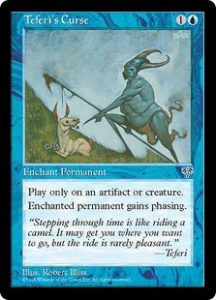
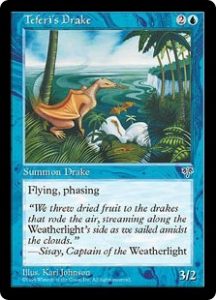
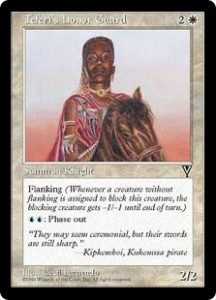
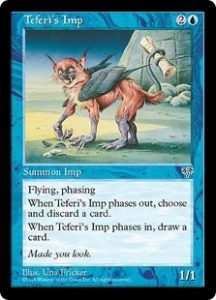
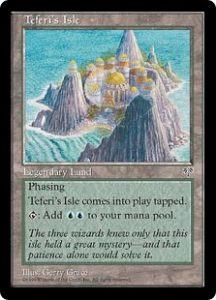

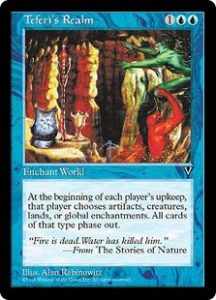
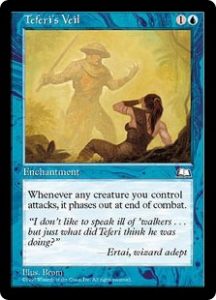
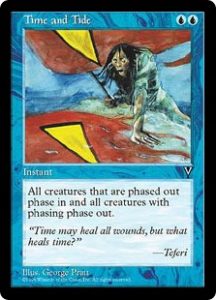
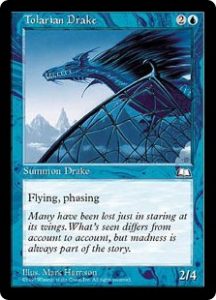

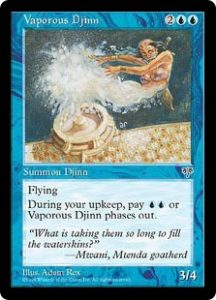
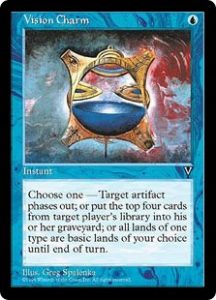
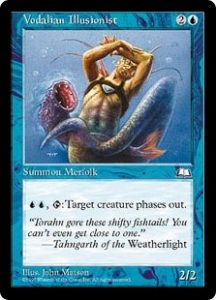
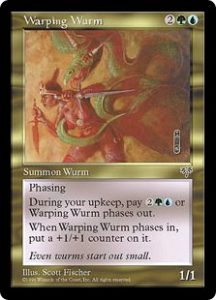
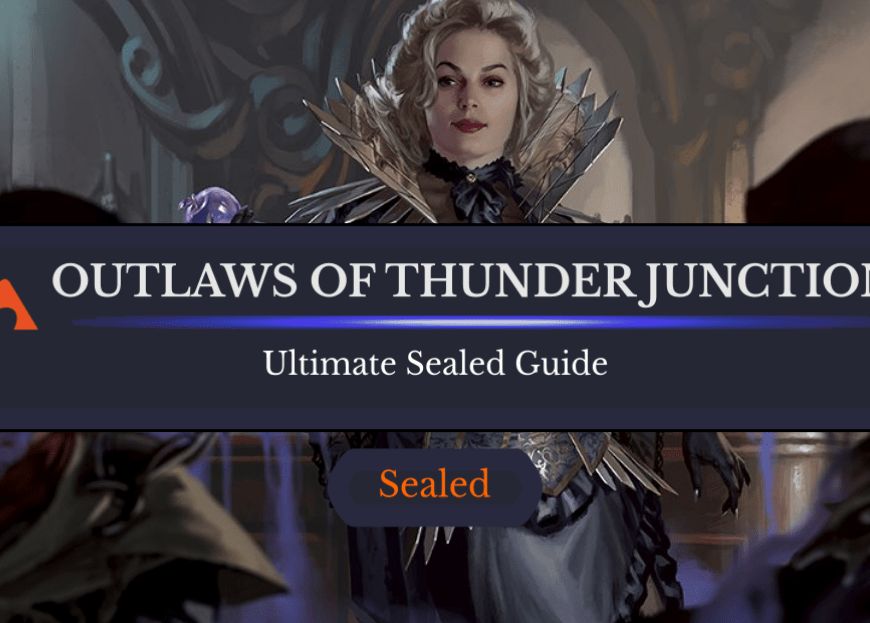

2 Comments
Okay, I think you answered this with the “for as long as” section, but I am not sure. My question is, will a creature’s static ability, which affects other creatures/cards remain in force when the creature with the ability is phased out, and other cards affected are not?
I’ll give you the situation for context. I have Emmara Tandris, whose static ability is to “prevent all damage that would be dealt to creature tokens you control.” So if Emmara Tandris phases out from another card, say Guardian of Faith, but creature tokens do not, do the creature tokens continue to have all damage dealt to them prevented?
I am assuming from your explanations here that since Emmara Tandris can no longer see, or be seen by the tokens, her ability becomes null and void, but let me know if I am wrong!
Your assumption is correct!
Add Comment